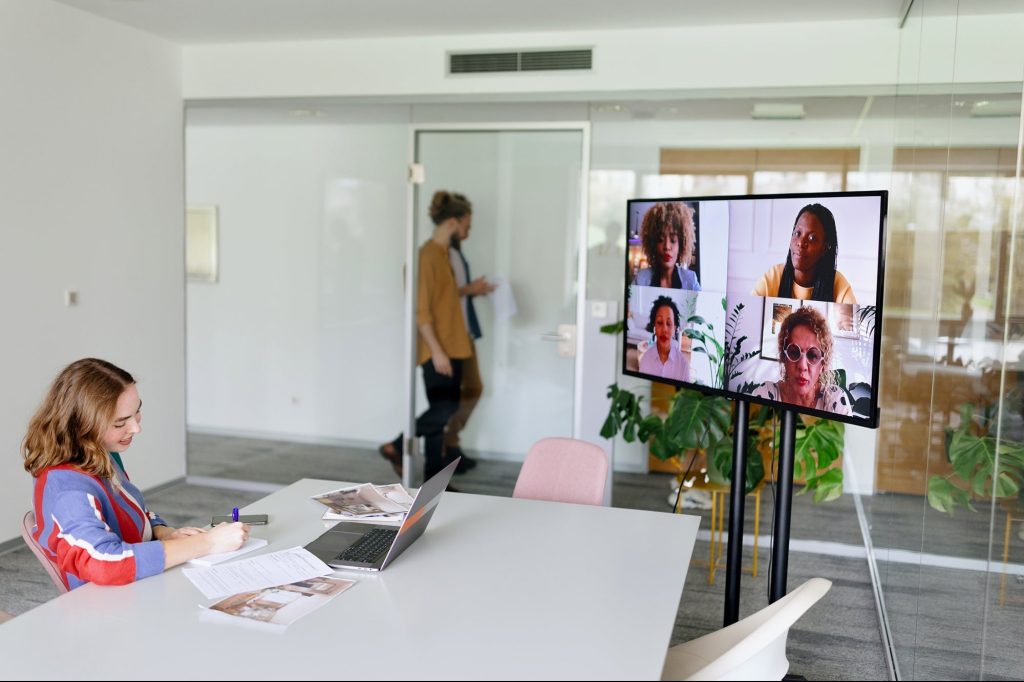Many organizations adopt a broad-brush approach to hybrid work that fails to differentiate between various departments and roles. For example, Comcast told every employee to come to the office every Tuesday, Wednesday and Thursday, and work remotely Monday and Friday. Apple asked all of its employees to come in on Tuesday, Thursday, and one more day that each department gets to pick.
Such indiscriminate treatment generally indicates the leadership of a company did not adopt hybrid work willingly. Instead, their hand was forced by employees threatening to leave without at least some flexibility. Indeed, both Apple and Comcast employees explicitly threatened to quit over the heavy-handed return-to-office plans, and some did so. For instance, the head of Apple’s AI team resigned due to Apple’s lack of flexibility.
As a result of being dragged kicking and screaming into allowing at least some work from home, the leadership of such companies fails to optimize their approach to hybrid work, undermining its potential for a major boost to productivity, retention, and cutting costs. Having worked with 24 organizations to help them transition to hybrid work, I can attest that getting the true benefits from hybrid work requires creating a customized decision framework for different departments and roles.
With 79% of all companies switching to hybrid work, according to the EY Work Reimagined Employer Survey, such poor decision-making around this work modality both harms the bottom lines of individual companies and also causes a harmful drag on the economy as a whole. Not surprisingly, according to the U.S. Bureau of Labor Statistics, productivity decreased significantly in the first quarter of 2022 when workers returned to in-person work environments with a drop of 7.5%; that fall marks the largest reduction in productivity since 1947. The second quarter also saw a large productivity decrease at 4.6%. By contrast, productivity increased sharply in the first two years of the pandemic, and that boost occurred specifically in the industries where much of the work can be done remotely such as IT and finance, as found by a recent National Bureau of Economic Research (NBER) study; while industries that require more in-person work fell behind in productivity measures.
Related: Why Hybrid Work Will Win Out Over Remote and In-Person — Whether You Like It or Not.
The basis for the hybrid work model decision framework
The basis for the decision framework centers around two distinct questions. First, what kind of work is best done remotely, and what in the office? Second, what type of work is done in each department and by different roles within them?
To answer the first question, we need to recognize that extensive investigations illustrate workers are fine with the office itself. What they don’t like is the commute, which takes many hours per week and costs many thousands of dollars per year.
So the tasks that employees can easily and productively do at home should be done there. And those tasks include the large majority of what many employees do: individual-focused work, asynchronous collaboration and communication, and videoconference and phone meetings. By contrast, the office is best suited for more intense and synchronous collaboration and communication, challenging conversations, cultivating team belonging and organizational culture, mentoring, on-the-job learning and leadership development.
Answering the first question shows the problematic nature of decreeing a fixed number of days of more than half the work week in the office for all staff, as did Apple and Comcast. Staff in various departments and roles have a different balance of the kind of work they do; their time and efforts are wasted if they do the wrong work in the wrong place, such as coming to the office and doing videoconference meetings. According to Stuart Templeton, the head of Slack in the U.K., “making a two-hour commute to sit on video calls is a terrible use of the office” and kills productivity. Moreover, it breeds staff frustration and resentment, leading to retention problems and higher costs due to replacing talented employees.
Instead, a decision framework needs to factor in the specific kind of work done in different departments and by specific roles in each department. For example, consider the finance department. Most of the activities of individual accountants involve solitary number crunching, with occasional asynchronous communication and collaboration. However, the end of a quarter, and especially the end of the fiscal year, usually involves more intense and synchronous collaboration. Thus, my clients find that it works best to have accountants come in once every couple of weeks during much of the year. But then, for the last week of a quarter and for the last two weeks of the year, accountants come in nearly every day.
While this pattern fits the role of most accountants, some accountants occupy more specialized roles. A case in point: auditors. They have a different pattern of work, which involves intense collaboration when preparing for and launching an audit. Next follows individual-focused work analyzing their findings. The end of an audit features intense collaboration — with some challenging conversations. That pattern demands a distinct approach to coming to the office to fit the needs of their particular roles within the accounting department.
The sales department has its own particularities, depending on what kind of sales a company does. For one of my clients, a B2B IT service provider, sales involve frequent phone calls. My client found it helpful in developing junior sales staff to have them sit together with more experienced salespeople with both making calls. Recently hired staff learned tips and tricks from how senior staff handled sales calls; in turn, experienced salespeople listened to the calls made by newer staff and provided quick feedback on improvements. As another benefit, the kind of sales they do involves frequent rejection, which can be demotivating: having everyone make calls together provides motivation and helps everyone celebrate wins. As a result, the sales team decided to come to the office three days a week to make phone calls and spent the other two days on more individual work at home.
For a financial management company, the analyst department found it most useful to spend the large majority of time at home. They did individual tasks such as evaluating data and preparing their own initial versions of predictions and recommendations. But then they came together once a month for several days in the office to synthesize the data, hash out differences and develop company-wide predictions and recommendations they could provide to clients about what investments to make for strong risk-adjusted returns.
In a Fortune 500 consumer products manufacturing company, the HR department had a more differentiated approach based on specific roles. Some staff who handled back-end HR functions worked mostly from home, coming together once a week for socializing and team building. The training staff in the HR department had a more varied approach. They provided some in-person as well as remote training to different business units in that company and came to the office mostly on the days of in-person training events. For a different case in point, recruiters operated largely independently of everyone else; the department found it cost-effective to allow them to work full-time remotely. Another type of role was the HR business partner, who functioned as a support person to the operational manager of each individual product team in the company. They adopted a pattern that reflected the specifics of the department that they supported.
How to tailor the hybrid work model decision framework
To tailor the hybrid work decision framework to each department and role, the company’s leadership team should start by determining some broad guidelines and budgeting priorities. Thus, some of my clients closed subsidiary offices, which made it impractical for many staff members to come to the office except for truly important events; others decided to save on salary costs by hiring some fully remote staff in lower cost-of-living areas for individual contributor roles that did not require intense collaboration.
After that, educate your staff —and especially middle managers who lead departments and teams within them — about what tasks are best done at home and what at the office. Create a broad understanding and acceptance among the management of the burden of the commute and the need to minimize it for the sake of retention, productivity and cutting costs.
Next, each department should develop an initial plan for itself. This process needs to involve the staff as well as department leaders, to garner buy-in from all staff. According to a November Gallup survey, 46% of employees who work in a hybrid setting reported feeling engaged when their team is able to make their own decisions about when to come into the office. On the other hand, 35% said they feel engaged when leadership determines the policy for the entire team.
Notably, only 41% of respondents indicated that they are engaged if everyone made the decision individually. This finding might seem counterintuitive. Indeed, when I run focus groups in client organizations, the large majority would prefer to make the choice by themselves. However, the result of such an approach is people coming to the office and not seeing the members of their teams and departments there. The result is disengagement since collaboration is the whole point of coming to the office and braving the commute. That problem highlights the value of coordination at the level of departments, roles and teams.
Related: You Should Let Your Team Decide Their Approach to Hybrid Work. A Behavioral Economist Explains Why and How You Should Do It.
Conclusion
After developing this initial plan, treat it as a draft rather than set in stone. Experiment for a couple of months and measure the success of your decision framework. After three months, have each department reassess the initial plan and update it based on what they found worked well and what needed improvement. This customized hybrid work model decision framework most effectively combines department-level coordination with rank-and-file buy-in from those in different roles and teams, helping my clients gain the best balance of productivity, retention and cutting costs.
Read the full article here






